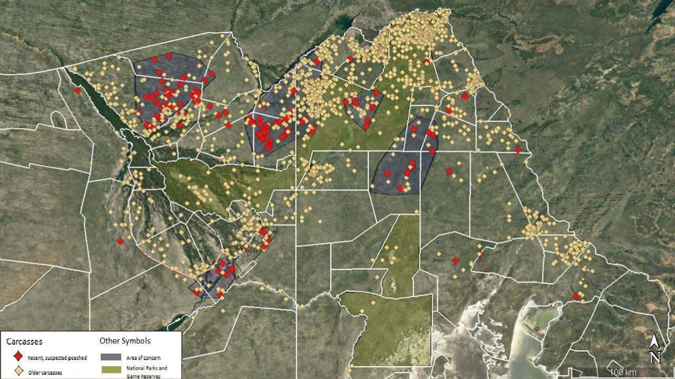
BOTSWANA 2018 AERIAL SURVEY – OF ELEPHANTS, BAOBABS AND CATTLE
Post series: Botswana elephants – to hunt or not?
The international furore over the Botswana government decision to recommence the hunting of elephant (and other species) necessitates an understanding of the entire picture. This post is one of eight posts from various sources looking at this issue from different angles. The other seven posts you should read to get the full picture:
• Botswana government announcement – hunting ban should be lifted
• Botswana government questions elephant survey report by Dr Mike Chase
• Personal statement from Dr Mike Chase, Elephants Without Borders
• Opinion post from Dereck Joubert – conservation spokesperson, filmmaker and lodge owner
• Opinion post from Gail Potgieter – human-wildlife conflict specialist
• Opinion post from Clare Doolan – tourism industry product and sales manager
• Opinion post from Erik Verreynne – livestock and wildlife veterinary surgeon in Botswana
BOTSWANA 2018 AERIAL SURVEY – OF ELEPHANTS, BAOBABS AND CATTLE
The much-debated 2018 aerial survey of Botswana’s wildlife is now available to members of the public via the Elephants Without Borders website.
Specific aspects of this survey have been the subject of heated social media debate and political posturing from all sides. Which is a pity, because this peer-reviewed report covers a lot more than the numbers of elephant carcasses – be they fresh, old, poached or natural deaths. You can also read about how baobab trees are being impacted by elephants, about significant increases in populations of many species and reductions in others, and about fluctuations in livestock numbers.
This fascinating and comprehensive report is well worth the read, especially if you wish to participate meaningfully in these critical discussions.

To comment on this story: Login (or sign up) to our app here - it's a troll-free safe place 🙂.![]()






